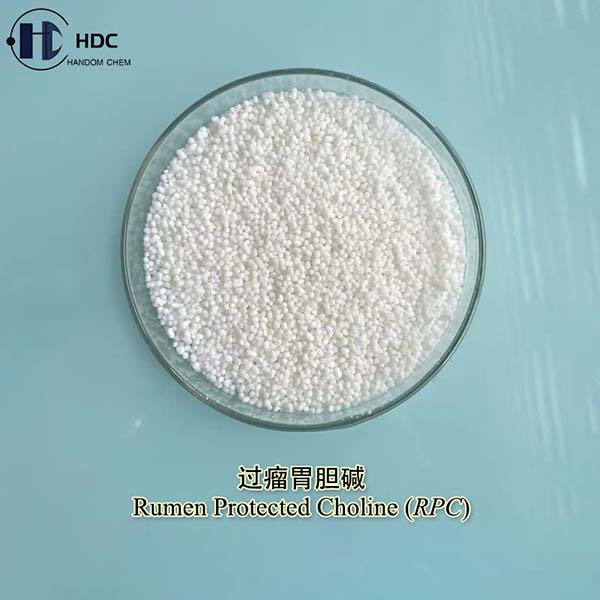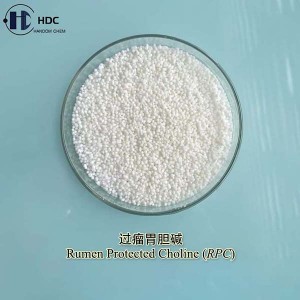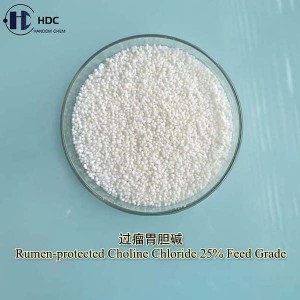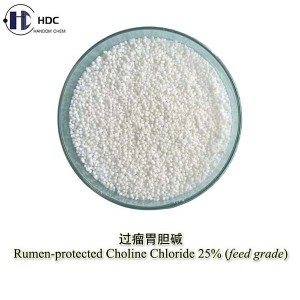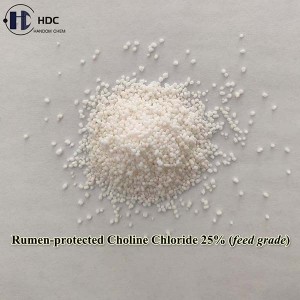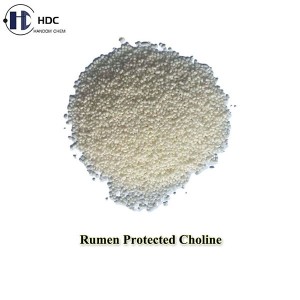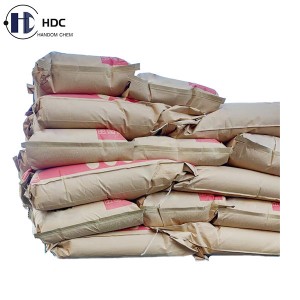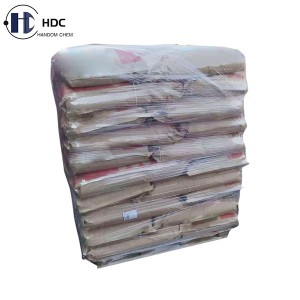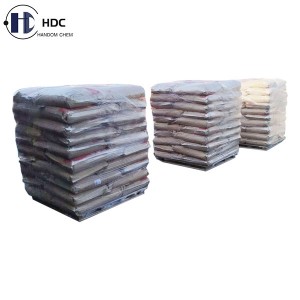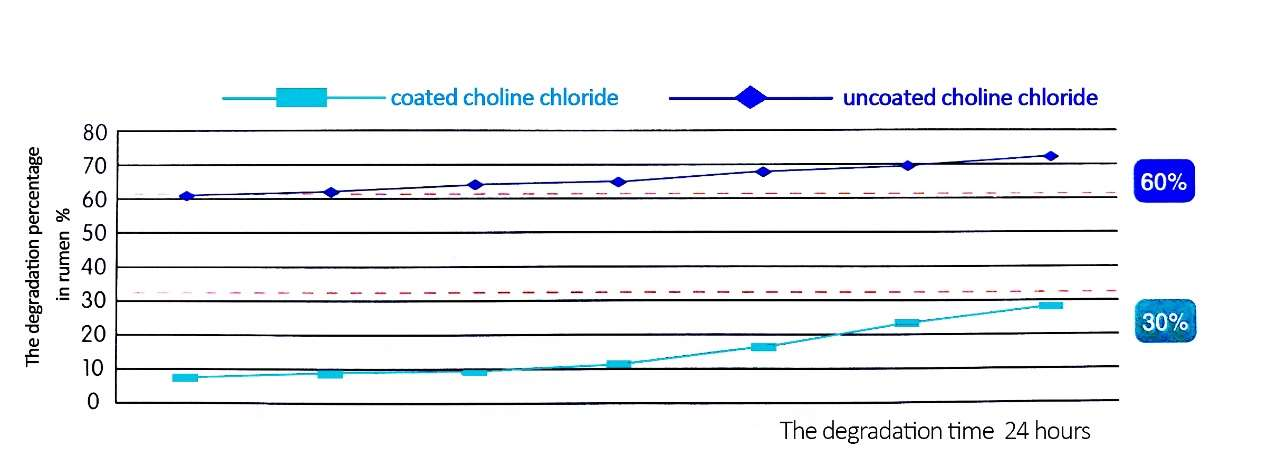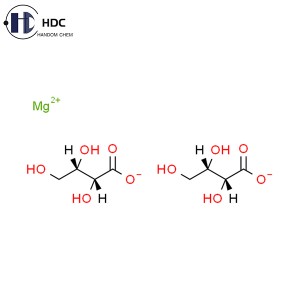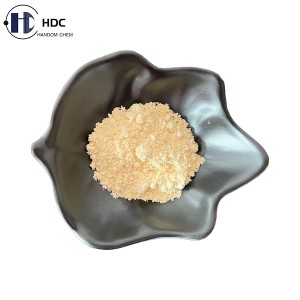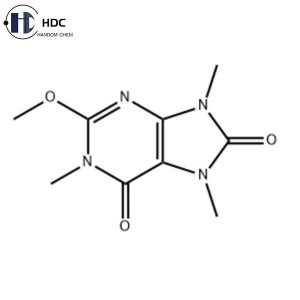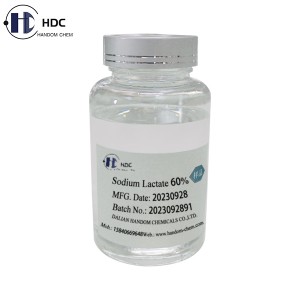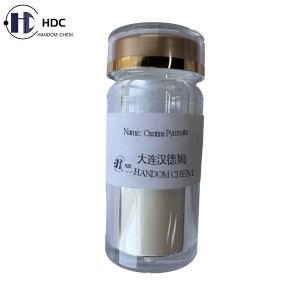Rumen-protected Choline Chloride
Brief Introduction:
Rumen-Protected Choline Chloride, also called Rumen-Protected Choline (RPC), which is a feed additive specially designed for ruminants (such as cattle and sheep). Through special processing (such as coating technology), choline chloride is not degraded by microorganisms in the rumen, so it can be effectively absorbed in the small intestine and exert its physiological function.

Core Concepts:
1. Choline Chloride:
It is the chloride form of choline and belongs to the water-soluble vitamin class, it participates in important physiological processes such as fat metabolism, liver function, and nerve signal transmission in animals.
♔ Function: Prevent fatty liver, promote lipid metabolism, and improve milk production, reproductive performance, and immunity.
2. Rumen Protected Technique (Rumen-passing Technology):
There are a large number of microorganisms in the rumen of ruminants, and ordinary choline chloride is easily decomposed and ineffective. Rumen Protected Technique protects choline chloride by coating (such as fat, polymer) or chemical modification, so that it is stable in the rumen, and is released and absorbed only after entering the true stomach (abomasum) and small intestine, thereby achieving the purpose of improving feed utilization.
Product Efficacy:
1. Reduce blood free fatty acids and protect the liver;
2. Prevent negative energy balance in dairy cows after delivery and reduce metabolic diseases such as ketosis and fatty liver in dairy cows;
3. Increase milk production, increase milk fat and milk protein content;
4. Prolong the peak lactation period;
5. Improve reproductive performance.
Specifications of our Rumen-protected Choline Chloride 25%:
| Test Items | Specifications |
| Appearance | White or yellowish granules with good fluidity |
| Choline Chloride Content | Not less than 25% |
| Carrier | Palm Oil |
| Loss on Drying | Not more than 8% |
| Particle Size | 100% pass through 10 mesh sieve |
Main Application Scenarios:
1) Dairy Cattle Farming:
- Prevent metabolic diseases such as fatty liver and ketosis during the peripartum period (before and after delivery).
- Increase milk production and milk fat rate, and improve reproductive performance.
2) Beef Cattle/Sheep Fattening:
- Promote muscle growth, reduce fat deposition, and improve feed conversion rate.
Recommended Dosage:
☝ Peripartum Dairy Cows: 3 weeks before calving to 3 weeks after calving, 30-50 g/head/day.
☝ Lactating Dairy Cows: Add as appropriate, 10-30 g/head/day.
☝ Beef Cattle and Mutton Sheep: 1-2 kg/ton of concentrate feed or use according to the formulator's recommendations.
Advantages and Necessity:
★ Solve the Absorption Problem: Ordinary choline chloride has a very low utilization rate in the rumen (<10%), but rumen protected technique can increase its absorption rate to more than 50%.
★ Metabolic Health: Choline supplementation can reduce liver fat accumulation and maintain energy balance, which is especially important for high-yielding dairy cows.
★ Economic Benefits: The breeding costs can be greatly reduced by improving production performance and disease prevention capabilities.
Test Data Support:
Choose 14 perinatal Holstein cows with similar health status for a randomized controlled trial:
Preliminary trial period was 7 days, Trial period was 4 weeks, Choose the mixed diet on the farm as the basic diet, Use the same diet composition,dosage and feeding method in control group and experimental group.
Control Group: Basic diet
Experimental Group: Basic diet+Rumen-protected Choline Chloride 20g (day/head)
Effects on the milk production performance of the cows in early lactation after adding
Rumen-protected Choline Chloride (n=7)
| Items | Group | Calving | Postpartum10 days | Postpartum20 days | Postpartum45 days |
| Milk Production/kg | Control group | 21.8±3.6 | 22.6±2.4 | 23.8±1.5 | 25.2±3.2 |
| Experimental group | 21.5±2.8 | 21.8±2.2 | 22.1±2.6 | 22.7±2.3 | |
| Milk Protein Percentage/kg | Control group | 3.10±0.12 | 3.08±0.09 | 3.08±0.11 | 3.05±0.08 |
| Experimental group | 3.09±0.11 | 3.06±0.10 | 3.05±0.07 | 3.04±0.09 | |
| Milk Fat Percentage/kg | Control group | 4.12±0.12 | 4.14±0.09 | 4.18±0.13 | 4.23±0.12 |
| Experimental group | 4.11±0.09 | 4.12±0.11 | 4.15±0.08 | 4.17±0.10 |
This shows:
1. Compared to the control group, the biggest volume variance of milk production occurs in the calving time, and this volume variance gets smaller with the progress of the lactation period.
2. The protein percentage and fat percentage of the experimental group show a little higher than control group.
3. To a certain degree, adding rumen-protected choline chloride could help to improve the milk production performance during the lactation period.
The degradation trial of rumen-protected choline chloride on the rumen of sheep
The degradation percentage of coated choline chloride in rumen within 24 hours is lower than 30%, while the degradation percentage of uncoated choline chloride in rumen within 30 minutes is over 60%, and over 70% within 24 hours. Thus it shows that the coated choline chloride can be well preserved in the rumen of ruminant.
Effects comparison of uncoated choline chloride and coated choline chloride
※ Note:
※ Dosage Control: Overdose may cause choline poisoning or interfere with the absorption of other nutrients.
※ Synergy with Other Additives: It needs to be combined with Rumen-protected Methionine, Vitamin B12, etc. to optimize the metabolic effect.
※ Storage Conditions: Avoid high temperature and humid environment that may cause the coating material to fail.
Packaging of our Rumen-protected Choline Chloride:
1kg/Aluminum Foil Bag, 25kg/Kraft Paper Bag (usually 1000kg packed on one pallet).
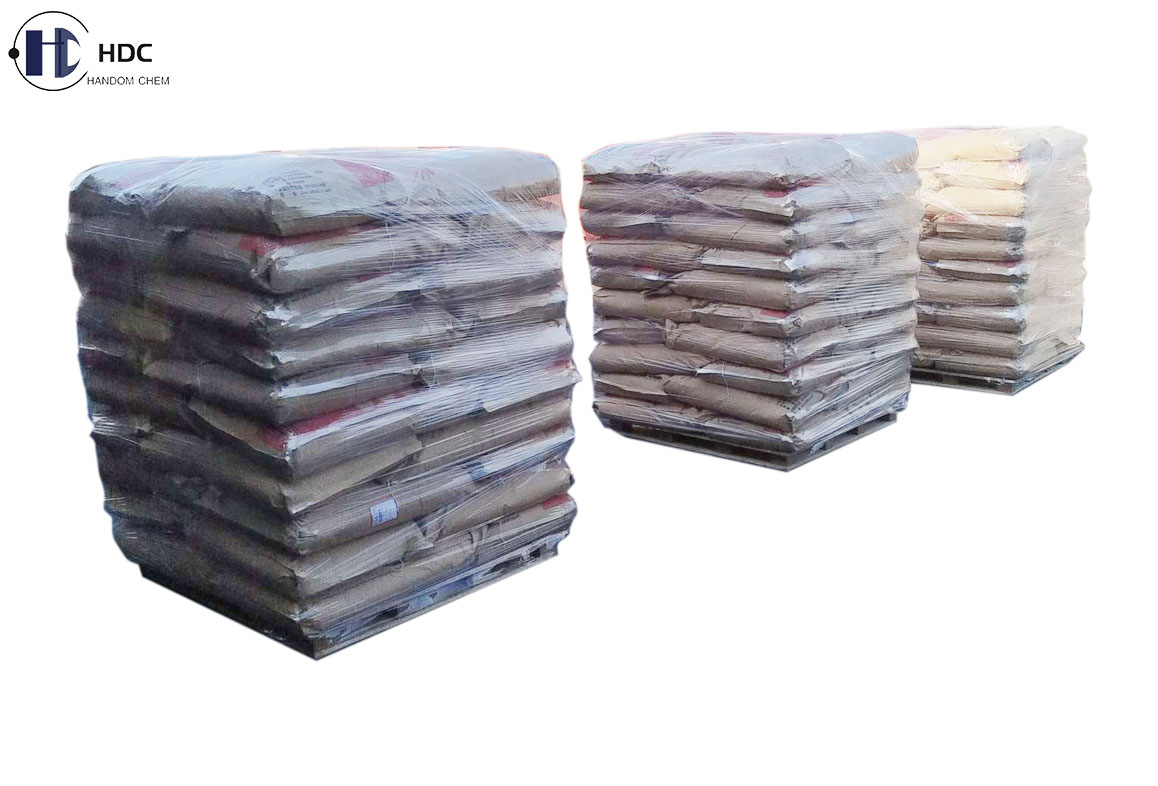
Shelf Life:
12 months from the date of manufacturing when stored under the above conditions.


